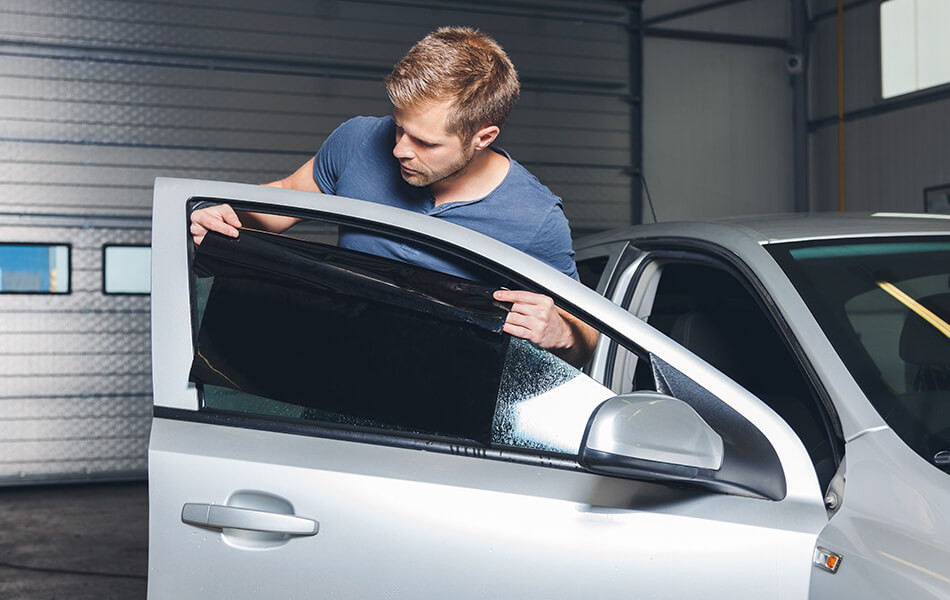Moro Auto Spa Window Tinting: Enhance Privacy and Style for Your Ride
Moro Auto Spa Window Tinting: Enhance Privacy and Style for Your Ride
Blog Article
Your Comprehensive Guide to DIY Home Window Tinting: Advice
Carrying out a DIY home window tinting job presents an opportunity to enhance both the capability and looks of your area. Before embarking on this undertaking, it is crucial to navigate the complexities of regional tinting laws and select a proper film that lines up with your purposes.
Comprehending Window Tinting Laws
Browsing the intricate landscape of window tinting laws is important for any type of DIY lover seeking to boost their vehicle's aesthetic appeals and comfort. Each state in the united state has details regulations relating to the allowed degrees of tint on numerous windows, which can dramatically impact your decision-making process.
Usually, these regulations determine the maximum permitted Noticeable Light Transmission (VLT) percent, which describes the quantity of light that can travel through the tinted home windows. Some states allow only a specific portion of tint on the front windscreen, while allowing darker shades on back windows. Conformity with these guidelines is important, as failure to stick can result in fines or the requirement to remove the tint entirely.
Additionally, there are often distinctions in between guest vehicles and commercial automobiles, with different regulations applying to each group. It's a good idea to consult your regional Division of Motor Cars or comparable authority to collect precise details customized to your location. Comprehending these laws not only guarantees legal conformity however also improves safety and security by maintaining presence and stopping possible risks while driving.
Choosing the Right Color Film
Selecting the proper color movie is an essential step in the do it yourself window tinting process, as it directly influences both the appearance and performance of your car's home windows. Numerous factors must guide your option, including the sort of movie, its legal compliance, and your desired end results.
First, think about the various types of color films available: colored, metalized, ceramic, and hybrid. Metalized films supply boosted warmth denial and longevity however can interfere with digital signals.
Next, ensure that the film sticks to neighborhood policies concerning visible light transmission (VLT) percents. Conformity with these legislations is essential to stay clear of penalties and guarantee security.
Crucial Devices for DIY Tinting
Having picked the right color film for your windows, the next step involves collecting the essential tools to make certain a successful setup. The key tools you will need include an energy blade or a razor blade, which is essential for cutting the color movie to the wanted dimension. A squeegee is also vital, as it assists Going Here remove air bubbles and smooth out the film throughout application.

Furthermore, take into consideration utilizing a warm gun or hairdryer, as this can assist mold the color film to the shapes of the home window and facilitate adherence. Handwear covers are suggested to avoid finger prints on the movie during installation. By gathering these essential tools, you will be well-prepared to tackle your do it yourself home window tinting project effectively.
Step-by-Step Application Refine
Begin by completely cleaning the window surface area to make sure ideal attachment of the tint movie. When the window is clean, measure the tint film against the home window, enabling for a minor overlap on all sides.
Lightly spray the home window surface area and the adhesive side of the movie. Thoroughly align the film with the top of the window, ensuring it is right. Use a squeegee to smooth the movie, applying firm, even pressure.
Permit the tint to heal for at the very least 24 hours without rolling down the windows. Comply with these steps faithfully for find this optimum results in your Do it yourself window tinting job.
Upkeep and Care Tips

It's advisable to wait a minimum of a week after installment before cleaning your windows to enable the adhesive to completely heal. Throughout this initial period, avoid rolling down the home windows to avoid any kind of damage to the color.
Routine maintenance includes evaluating the edges of the tint for any indicators of bubbling or raising. If you observe any type of issues, it's finest to address them promptly to prevent more damage. Furthermore, be cautious with using window treatments, such as shades or drapes, as they can create heat that may endanger the color with time.
Verdict
To conclude, taking on a do it yourself home window tinting project requires mindful factor to consider of regional regulations, selection of appropriate color films, and the utilization of essential tools. A methodical application process ensures optimum results, discover this info here while normal upkeep contributes to the durability of the tint - Moro Auto Spa Window Tinting. By sticking to these guidelines, individuals can achieve both visual improvement and boosted privacy in their rooms, making do it yourself window tinting a useful endeavor
Report this page